Part 1 explored Shamatha and Vipassana. Part 3 explores Non-Dual and Direct Path meditation.
Tantra was a radical response to the rigid and institutionalized direction that spirituality had taken in India in the early part of the first millennium.
Liberation was seen as sometime only attainable by The Brahmans (priests) at the time, who had renounced the material world and its pleasures.
Tantra challenged the idea that we had to renounce anything at all. Embracing the whole of life, it claimed that anything and everything could be used as a means to liberation.
Tantra challenged the idea that we had to renounce anything at all. Embracing the whole of life, it claimed that anything and everything could be used as a means to liberation.
There are MANY Tantric traditions and lineages, each with its own unique practices and philosophies. The first distinction to make is between Buddhist and “Hindu” Tantra. Buddhist Tantra is best known in the form of Tibetan Buddhism, while Hindu Tantra is often known as Tantric Shaivism (Shaivism refers to Shiva, a primary deity in the Hindu tradition).
(Just a note on Hinduism, that it is not at all a unified religion, it actually encompasses many different religious traditions from India that are seen as distinct from one another, but when Westerners colonized India they saw that they more or less used the same deities and holy texts so they grouped them all together as “Hindu”, which is a western made up term and wasn’t previously used in India.)
To better understand its approach and methods, I think it’s best to look at some of the common themes of Tantric practice that show up across traditions.
While Vipassana style Buddhist practice is about deconstructing our experience to reveal the underlying truth, Tantra instead utilizes imagination to invoke energies to activate and purify our being and vision, challenging a limited sense of Self and opening the door to a more expansive perception.
Tantra works with deities, that may sometimes be called Gods and Goddesses (especially in the Hindu tradition), but are not necessarily what westerners would think of when they talk about Gods and Goddesses.
These deities are meant to represent universal or archetypal energies, energies of creation (and destruction), love and compassion, clear vision and wakefulness, wisdom and ultimate truth or full realization.
The idea is that these forces are in fact formless and beyond what our mind can comprehend, so we personify the forces and imagine them in human-like form so we can better relate to them.
In Tibetan Buddhism, for example, one of the central practices is called deity yoga, where you actually become the deity. Many of these practices are “secret”, meaning you have to complete certain preliminary practices first, and then be initiated into the practice by a qualified teacher, but some are considered more “safe” and therefore open to the public.
Vajrasattva practice is one of these practices that is open to the public, no initiation needed (although I did receive initiation into this practice on retreat by my old teacher/Lama).
Tibetan Buddhism is very maximalist in its aesthetic, and the practices are no different. You are challenged to expand your capacity for visualization, imagining every detail simultaneously.
And you are not just visualizing Vajrasattva as static, there’s a whole detailed process in which he appears, then you become him, and then you eventually collapse yourself into a rainbow body, and then into nothing at all.
There is in fact a really cool illustrated guide to Vajrasattva practice, which makes clear just how complex and detailed this practice is. In short, you visualize Vajrasattva above you, his magical nectar drips down a lotus flower protruding from your head, and the nectar fills you up, activating different energy centres with different colours, all the while reciting mantras. Then Vajrasattva dissolves into you, and you become Vajrasattva, before you eventually dissolve yourself.

The whole meditation is filled with rich symbology; a friend of mine likened the practice to a beautiful symphony.
There are countless little details I’m leaving out, the meditation really challenges your visualization skills, which inevitably get better with practice, opening up your perceptual abilities.
Themes of Tantra
Across both Buddhist and Hindu Tantra, we see a huge emphasis on ritual, mantra, visualization, symbology, deities, and guru yoga.
Tantra is meant to activate energy in the body to help with purification and realization.
For this purpose, there is often an imagining of divine light in the body, lighting up specific energy centres and energy channels, with an emphasis on the central channel.

We could say there are roughly two types of awakenings: energetic and perceptual (though I’m sure there are more). Tantra focuses first on creating an energetic awakening, using countless techniques to activate energy in the lower centres and moving it up the spine.
Vipassana traditions typically don’t focus on these energies, although these energetic awakenings do happen spontaneously in Vipassana practice, and are discussed in classic texts. Instead Vipassana practice emphasizes the perceptual shift that happens as we deconstruct our experience through paying careful attention to sensory experience.
While Tantra is very energetically focused, Buddhist Tantra and many traditions of Hindu Tantra are non-dual in their view, emphasizing the perceptual shift as the ultimate goal.
Tantra Today
Practicing Tantra traditionally is quite the undertaking. Every tradition I’m aware of requires working with a Guru and committing to a long journey of daily ritual and meditation practice. It’s certainly not for everyone.
But we see the spirit of Tantra show up in many ways today, sometimes called Tantra, sometimes not.
Neotantra
There’s been a growing movement of what’s often referred to as Neotantra in the West. In some ways it resembles elements of traditional Tantra, in other ways it diverges.
Neotantra is very much focused on sexuality and sexual liberation. It points out our relative sexual repression in the West, and speaks to the energetically contractive nature of sexual shame.
Neotantra is very much focused on sexuality and sexual liberation. It points out our relative sexual repression in the West, and speaks to the energetically contractive nature of sexual shame.
One of the common Neotantric practices involves working with sensations of pleasure; learning to relax around pleasurable sensations instead of contracting around them with the goal of letting them reverberate through your being.
With practice, this can greatly amplify the sensations, and they can act as a purifying force, working through emotional and energetic blockages.
While this type of practice is no doubt effective for various purposes, traditional Tantric Shaivism scholar and teacher Christopher Wallis points out in his book Tantra Illuminated that pleasure was never utilized in this way in traditional Tantra; instead sexual energy was only cultivated to be redirected up the central channel (along the spine), attempting to induce energetic awakenings.
Many Tantric purists like to criticize Neotantra, but I see the practices as having value if done responsibly (let the kids have their fun!) I believe Neotantra, while often lacking as a complete spiritual path, has immense value for many people and can help to liberate stuck or blocked energy and help to create more intimacy and connection.
It should just be noted that there are countless instances of sexual abuse in the world of Tantra, both neo and traditional, so caution and research is advised before singing up to anything (unfortunately this is a truth across nearly all religious traditions, but Tantra seems to attract a lot of sexually deviant people for obvious reasons).
New Age Meditation
We also see the spirit of Tantra showing up in new age meditations. A great example of this is Joe Dispenza, a bestselling author and meditation teacher. While I’ve never heard Joe credit where he gets his practices from, many of his core practices are very Tantric in nature.
If Joe is gifted at one thing, it’s making you believe that change is possible for yourself. He guides you to visualize your perfect self or future self, an image of yourself fully healthy, fully realized, fully you. And then you feel it, embody it in that moment, and start to believe that it’s really you, right now.
Although we’re not using deities here, this very much follows the same principles of deity yoga, where you are imagining yourself a fully realized being.
Joe also utilizes a breathing technique, where you breathe energy up your spine from the base, which is a common Tantric technique.
Further, Joe also utilizes a practice of “becoming nobody” where you dissolve your sense of self into vast spaciousness. This bears a lot of resemblance to Dzogchen practice, which is considered the final or “great perfection” practice in Tibetan Buddhism, and is in fact a non-dual practice, though Joe does it in his own way.
We can see these same Tantric principles in the whole manifestation movement as well, where you essentially manifest your desires by imagining the feeling of having already achieved them.
Criticisms
My main criticism of Neotantra, Joe Dispenza, and the new age manifestation movement in general, is that they largely lack the emphasis on wisdom and compassion that are foundational to the older traditions.
Traditional Tantra is about awakening, which is very much about seeing the illusory nature of the ego and therefore not feeding into it (and having a guru to keep you in check), while these newer traditions can very much be used to feed and inflate your ego and egoic desires (and often do so).
Traditional Tantra is about awakening, which is very much about seeing the illusory nature of the ego and therefore not feeding into it, while these newer traditions can very much be used to feed and inflate your ego and egoic desires (and often do so).
In Buddhist Tantra, there’s a big emphasis on how to relate to suffering, on the truth of impermanence, and on the true nature of the self (The Three Characteristics). These are the insights that lead to liberation, and they seem to be completely or mostly missing from newer traditions.
Accessible Tantra
While most traditional Tantra requires pretty serious commitment, there are some great teachers making these practices accessible to a wider audience, without losing the essence of the original teachings and practices.
The yoga we all know in the west actually has Tantric origins, though many of the more esoteric practices haven’t made their way into yoga studios.
Kriya Yoga is one such lineage that is very Tantric, very much focused on raising the energy up the spine, and has preserved a rich philosophical foundation. There are many Kriya Yoga teachers making these practices accessible if you search around, but an easy starting point would be Forrest Knutson on YouTube.
One of my personal favourite resources is Advanced Yoga Practices. The site has quite the interesting origin story…
One day in 2003 an anonymous man going by the screen name Yogani started posting very detailed teachings and practice instructions on a public yoga forum. It became clear this this guy really knew his stuff, and he was happy to share his teachings at no charge.
He’s made a very accessible structured approach where he starts you off with basic meditation techniques and gradually introduces more practices like mantra, visualization, and breathwork, laying out a pathway to progressively deepen your practice.
Over time he garnered many students, and over the years he empowered many of them to teach his methods. While Yogani originally made all the teachings free and doesn’t care to make money from his work, the site recently started charging for the teachings (at a very fair and affordable price) to support the other teachers and larger community initiatives.
As far as I’m aware, no-one in the organization knows Yogani’s true identity to this day. He really doesn’t want fame or fortune, he just loves this stuff and is happy to share.
One thing I love about Yogani is his move away from the guru model. He ends every post with the phrase “The guru is in you”, meaning that you don’t need to look outside for any spiritual authority, that the ultimate spiritual authority is in you.
One thing I love about Yogani is his move away from the guru model. He ends every post with the phrase “The guru is in you”, meaning that you don’t need to look outside for any spiritual authority, that the ultimate spiritual authority is in you.
Another great teacher making Hindu Tantric practices accessible is Kavitha Chinnaiyan, author of Shakti Rising: Embracing Shadow and Light on the Goddess Path to Wholeness.
Kavitha grew up in between India and the US, and has had multiple teachers in different Tantric and non-dual traditions, both eastern and western (she also credits Yogani as one of her teachers, and Yogani actually urged her to start teaching, though she also admitted to not knowing his real identity).
In Shakti Rising, Kavitha lays out the philosophy of Tantric practice and guides you through creating your own Tantric rituals and meditations working with various Goddesses. It’s a great book and practice guide if you want to dive into Hindu and non-dual Tantra.
If you want to explore Tibetan Buddhist Tantra, Miles Neale has an excellent book called Gradual Awakening: The Tibetan Buddhist Path of Becoming Fully Human. It’s philosophically rich and also a practice guide, supporting a modern expression and integration of traditional practices.
For deeper dives on these topics, Christopher Wallis explores the history and practice of Non-dual Tantric Shaivism in his book Tantra Illuminated. Although a fantastic work, it’s not a practice guide.
Ken McLeod also has an impressive book on Tibetan Buddhism called Wake Up To Your Life: Discovering the Buddhist Path of Attention. This is a very comprehensive workbook for exploring and practicing Tibetan Buddhism. It’s depth and level of detail may be intimidating to a newer practitioner, but if you want a pragmatic deep dive into this tradition then this book may be for you.
Practicing In The Spirit of Tantra
Personally, I like to bring elements of tantric practice into my meditation without strictly following any tradition. Although traditional Tantra is very structured in its practices, the spirit of Tantra is creative and exploratory.
On the simplest level this means making and maintaining an altar, visualizing myself lighting up like a Christmas tree while meditating, and feeling into my best self; my divine, radiant, unbounded nature.
Using a simple mantra can be great too. Yogani recommends the mantra “I AM”, but insists to not get caught up in the meaning of the statement, but instead to feel the resonance of the sound in your being (even if only reciting the mantra in your head). You can focus on the sounds of the syllables, as if you are reciting “ayam”.
You can further use visualization to your advantage by visualizing an idyllic environment, possibly somewhere in nature, or maybe in an underground or cosmic palace.
Conclusion
Tantra isn’t for everyone, but I feel it really suits people who have vivid imaginations or are tapped into “archetypal” or visionary realms. People prone to energetic experiences may also find a lot of guidance on how to work with these energies via Tantra.
Personally, I see Vipassana as my sort of baseline practice as its simplicity and directness provides a strong foundation for any other spiritual or meditative practice. Tantra is something I then add on, enriching my practice with beauty, elegance, divinity, and a sense of devotion.
If you find these things interesting and want to learn more, I hope you’ll join my in my Comparative Meditation Course. It’s designed for beginners, but the breadth of the course is meant to make it engaging for meditators of all experience levels.
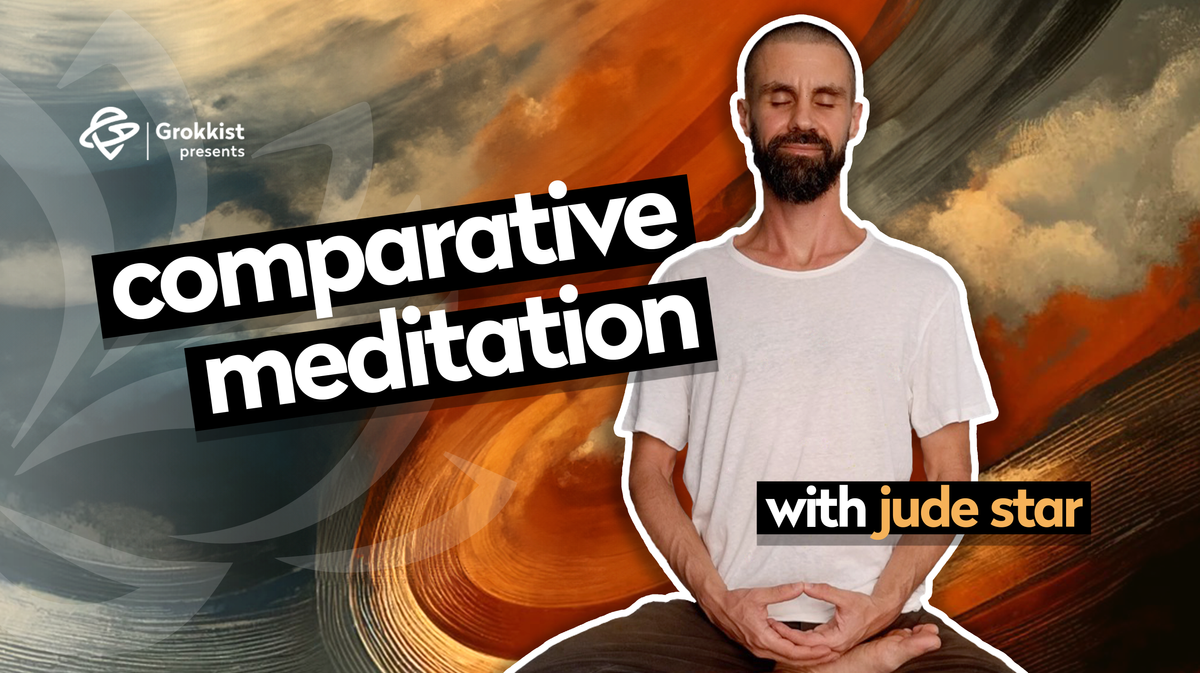
Part 1 – Shamatha's calm abiding to Vipassana's insightful mindfulness.
Part 3 – Non-Duality and Direct Path: starting at the end.


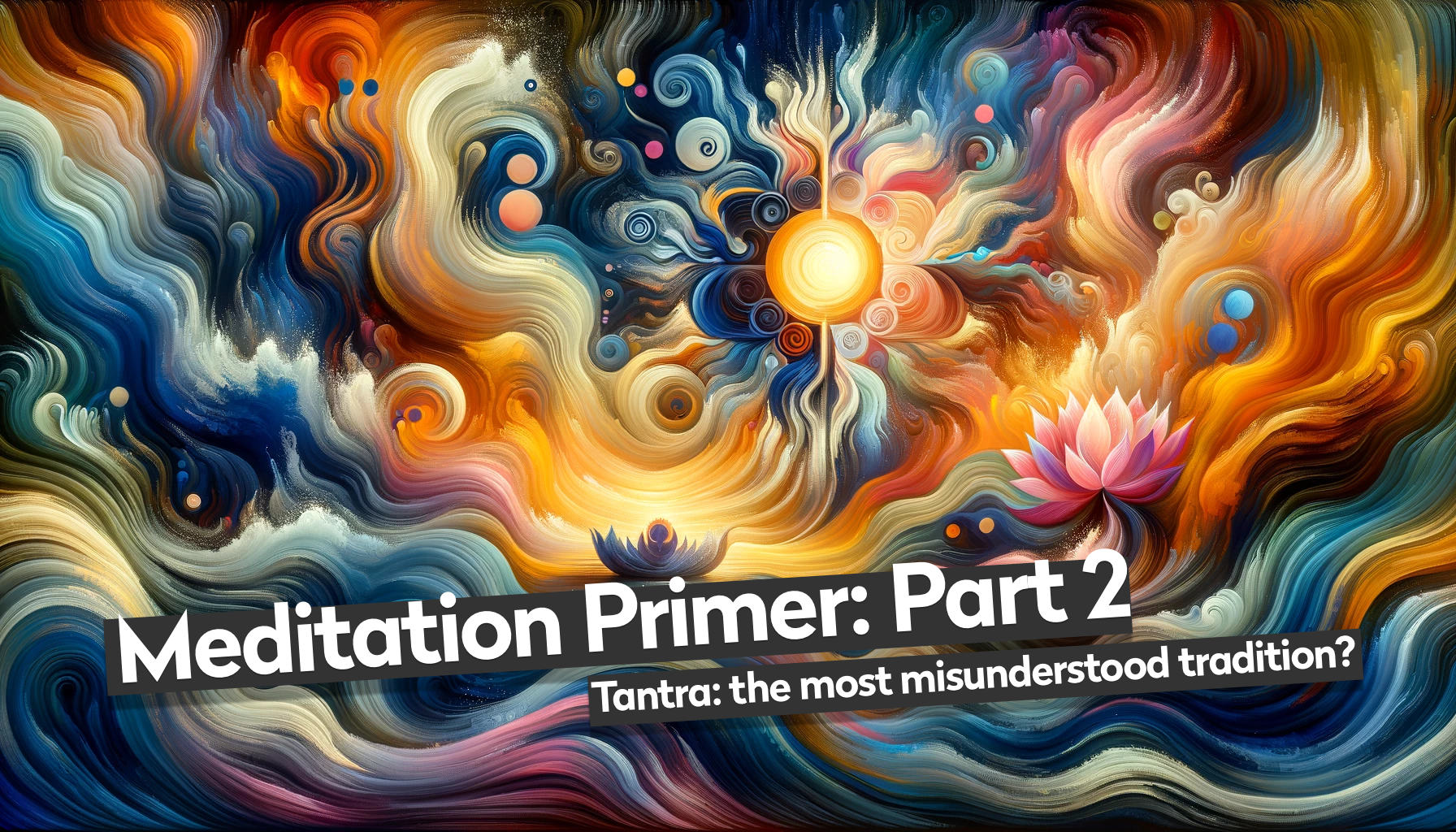
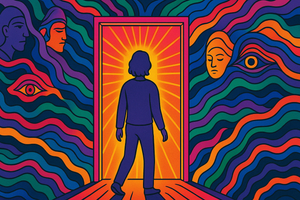




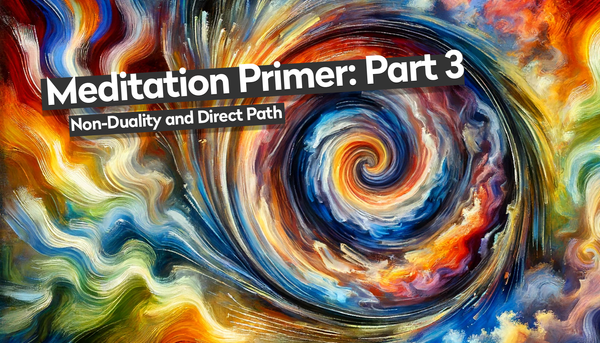

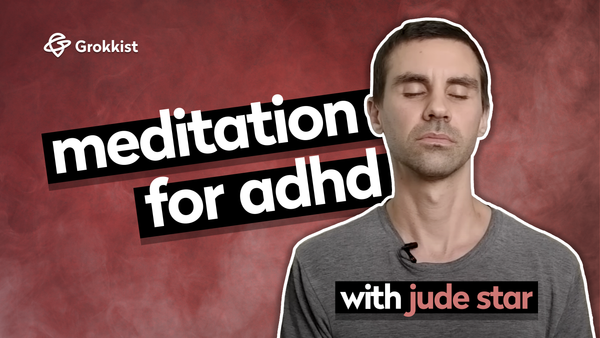
Member discussion